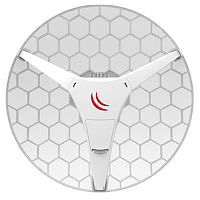I am helping a local business-- their location is several blocks outside the service radius of decent broadband-- they said they would get him service if HE paid for the expansion of THEIR network line. He is on phone-line DSL.... ugh.
So--- how LITERAL is the term "line of sight" for the different Ubiquiti products? Can it go through Some trees? Ub has some very inexpensive products that they rate as having a 15km range. For example:
Amazon.com: Ubiquiti NanoBeam ac Gen2 High-Performance airMAX ac Bridge (NBE-5AC-Gen2-US): Computers & Accessories
I am trying to figure out if this might be a decent way for his business to get a reasonable internet connection, but planning an air link to a source might be tricky. Has anyone used this in less-than-ideal conditions with any success?
So--- how LITERAL is the term "line of sight" for the different Ubiquiti products? Can it go through Some trees? Ub has some very inexpensive products that they rate as having a 15km range. For example:
Amazon.com: Ubiquiti NanoBeam ac Gen2 High-Performance airMAX ac Bridge (NBE-5AC-Gen2-US): Computers & Accessories
I am trying to figure out if this might be a decent way for his business to get a reasonable internet connection, but planning an air link to a source might be tricky. Has anyone used this in less-than-ideal conditions with any success?
As an Amazon Associate IPCamTalk earns from qualifying purchases.



 The Fresnel Zone graphic from the link posted above is really great....
The Fresnel Zone graphic from the link posted above is really great....









